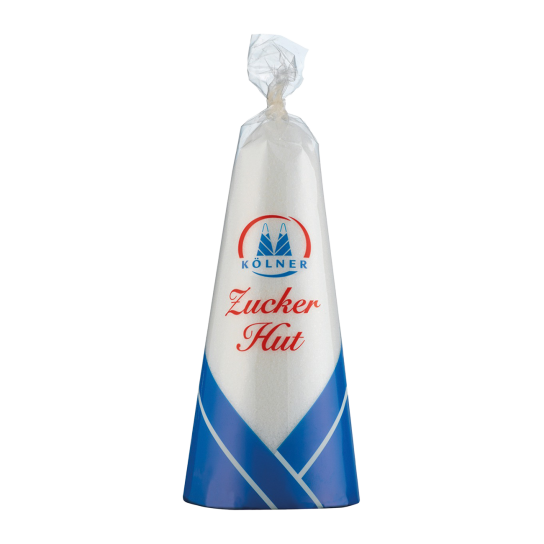Zuckerhut
Description
Ingredients & Allergens
Nutritional Values
Only 100 years after the discovery of the sugar beet, this crop was increasingly cultivated throughout Europe. Consumption increased, and sugar developed from a luxury item into a popular foodstuff. In the 19th century, sugar was produced in a cone shape. Today, this traditional shape is achieved by pressing the fine crystal sugar. The sugar cone is used especially in the cooler season for the preparation of the Feuerzangenbowle.
Origin: Germany
Storage: Store in a cool and dry place
Contact: PFEIFER & LANGEN GMBH & CO. KG Aachener Straße 1042 a 50858 Cologne, Germany
* We kindly ask for your understanding that the product design may differ from the illustration.
100% white sugar.
Contains the following allergens and may contain traces thereof:
No allergens inlcuded
100 g contain on average:
Calories (energy): 1700kJ / 400kcal
Fat: 0,0 g
- of which saturates: 0,0 g
Carbohydrates: 100 g
- of which sugar: 100 g
Dietary Fiber: 0,0 g
Protein: 0,0 g
Salt: 0,0 g
Description
Only 100 years after the discovery of the sugar beet, this crop was increasingly cultivated throughout Europe. Consumption increased, and sugar developed from a luxury item into a popular foodstuff. In the 19th century, sugar was produced in a cone shape. Today, this traditional shape is achieved by pressing the fine crystal sugar. The sugar cone is used especially in the cooler season for the preparation of the Feuerzangenbowle.
Origin: Germany
Storage: Store in a cool and dry place
Contact: PFEIFER & LANGEN GMBH & CO. KG Aachener Straße 1042 a 50858 Cologne, Germany
* We kindly ask for your understanding that the product design may differ from the illustration.
Ingredients & Allergens
100% white sugar.
No allergens inlcuded
Nutritional Values
100 g contain on average:
Calories (energy): 1700kJ / 400kcal
Fat: 0,0 g
- of which saturates: 0,0 g
Carbohydrates: 100 g
- of which sugar: 100 g
Dietary Fiber: 0,0 g
Protein: 0,0 g
Salt: 0,0 g
